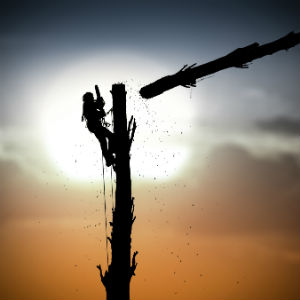When Should You Have a Tree Removed from Your Property?

 When you have trees on your property, the benefits are many. Whether your tree provides a tire swing for your little one, or shade in the hot summer months, trees are a valuable part of any property. While having large trees creates a diverse landscape, knowing when you need tree removal services for your home is important.
When you have trees on your property, the benefits are many. Whether your tree provides a tire swing for your little one, or shade in the hot summer months, trees are a valuable part of any property. While having large trees creates a diverse landscape, knowing when you need tree removal services for your home is important.
When a Tree is at Risk of Damaging Your Home
All trees become unstable over time, and eventually they become a risk to your property. If you have a small storm and your tree loses a number of branches, this could indicate that the tree itself is no longer strong enough to remain on your property. If the tree is close to your home or another structure on your property and it has been losing branches easily, it’s time to have the tree assessed by a professional arborist.
Check to See if Your Tree is Leaning
Trees that are weakening at the root system will begin to lean. Step away from the tree in question so that you can see the tree completely. Look for signs that your tree is leaning to one side or another. While some trees will lean one way or another because of where the sunlight hits the tree, if you think the tree is abnormally leaning it’s time to call in for help. A tree that is leaning or tipping indicates a problem with the root system, a dying tree or one that is dead already.
Look at the Root System of Your Tree
Check the ground around your tree, especially the ground under the canopy. If you can see roots that are clearly damaged or dying, this can indicate a big problem. When the roots are decayed, the tree itself begins to lose its support system. Losing the root system will cause your tree to be a significant fall risk. When you call in a certified arborist, you can discuss your concerns to see if the tree needs to be removed or not.
Check Out Your Tree’s Trunk
If your tree has extensive cracks in the trunk, or if there are large holes made by animals or insects, that can indicate a decaying tree. Too many holes in the trunk of your tree, and the tree will become unstable. If you have visible cavities and cracks in your tree’s trunk, call in an arborist to see if your tree needs to be removed or if it is safe on your property.
If you see signs that the bark is rotting on your tree, it is likely that your tree needs to be removed soon to protect your property and your family. The bark can also get covered in mildew and moss, a sure sign that something is wrong with your tree.
The Leaves Appear Decayed or Spotted
If the leaves on your tree look discolored, or they fall off before it’s time, this indicates that your tree is unhealthy. There could be an insect infestation within your tree, or something could simply be destroying the leaves. If you don’t know what’s causing the leaves on your tree to fall off or appear discolored, you need to call in a professional who can identify and potentially treat the problem with your tree. Left alone, your tree will likely become more sick over time, and need to be removed completely.
Get a Full Canopy Inspection
The canopy on your tree is the system of leaves and branches, and it’s difficult for the average person to find problems within the canopy that indicate the need for a tree to be removed. A certified arborist will do a full canopy inspection, and find any dead branches, decay or other signs of tree concerns that are difficult to see from the ground. When you get a full canopy inspection, the arborist may recommend cutting off several branches to protect the integrity of the tree as a whole.
If you notice a tree on your property that has begun to shed branches easily, or it now is a big attraction to wood boring animals, it’s time to call Rickert Tree Services to come and look at your tree to see if it is a danger to you or your property. When you ignore these problems, you run the risk of large branches ruining structures and potentially landing on you or family members.







